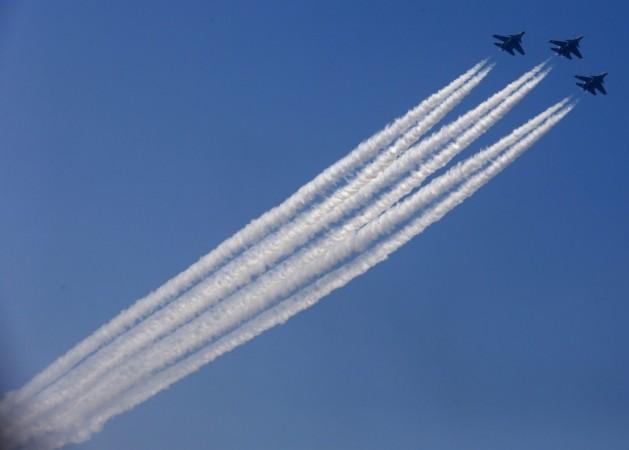
India's long awaited indigenously designed and developed Light Combat Aircraft (LCA) is set to receive the second Initial Operational Clearance on Friday in Bangalore.
The preparations are in full swing at the Old Airport in Bangalore, where the LCA named as Tejas will display its flying capability in presence of Defence Minister A K Antony, Air Chief Marshal, Chief of Indian Air Force (IAF) and Avinash Chander, Director General of Defence Research and Development Organisation (DRDO).
Tejas is a single engine multi-role supersonic fighter with a quadruple digital fly-by-wire Flight Control System (FCS) and associated advanced flight control laws. The extensive use of advanced composites in the airframe gives high strength to weight ratio, long fatigue life and low radar signatures.
The aircraft has clocked about 2,415 test flights, according to a statement by Ministry of Defence. The first Initial Operational Clearance for the LCA was obtained in January 2011, during which the aircraft was deemed fit to fly under all weather conditions right from snow capped mountains of Ladakh to the deserts of Rajasthan. LCA has also successfully demonstrated weapon delivery capability during its weapon trials at Jamnagar & Jaisalmer.
The Final Operational Clearance (FOC) is scheduled for 2015, when the aircraft will be combat ready for induction into the Indian Air Force.
"The production facilities have been set up at HAL and the aircraft delivery is expected to commence from 2014. We have plans to initially produce eight aircraft per year," said R K Tyagi, Chairman of HAL in a statement.
"Further plans are afoot to enhance the production rate to 16 aircraft per year in consultation with IAF and MOD. HAL is fully geared up to meet the challenging production schedule and hopes to fulfil the requirements of customers in a time bound manner."
After the IOC-2, HAL will begin the series production of LCA.
The upgrade and augmentation of production tooling is underway to enhance the pace of production and to expedite delivery of aircraft for two IAF squadrons in the next four to five years, the statement explained. IAF has placed an order for 40 aircraft in the first phase.
The total cost of design and development of LCA project is said to be ₹18,000 crore. Additionally, one LCA manufactured by HAL will cost about ₹200 crore.
Genesis
1969: Government of India accepted the recommendation by Aeronautics Committee for designing and developing an advanced technology fighter aircraft.
1975: HAL completed design studies but failed to implement it because it could not procure an engine from a foreign manufacturer.
1983: LCA project was sanctioned for ₹560 crore to replace the ageing Russian-made MiG-21 aircraft.
1984: Aeronautical Development Agency was established to manage the LCA programme under DRDO.
1998: The Pokhran nuclear tests led to trade sanctions by US and hence delayed the LCA programme.
Kaveri engine development failed prompting the Defence Ministry to opt for a GE Engines.
2005: IAF placed an order for 40 aircraft.
2008: The first Limited Series Production few in June. In 2009 LCA completed 1000 flights with more than 530 hours of in-flight testing
2011: LCA obtained the first IOC

















